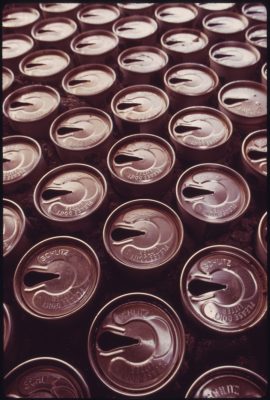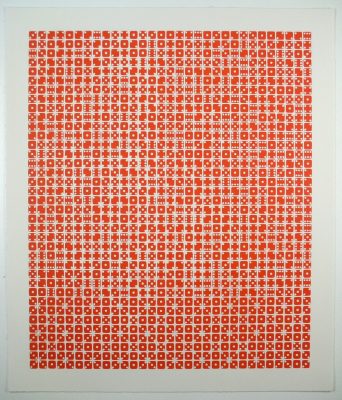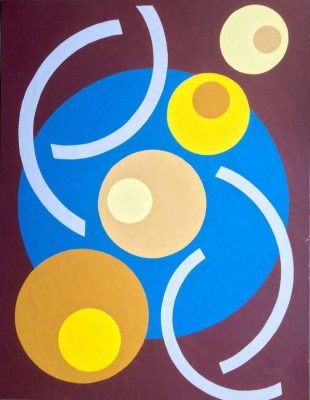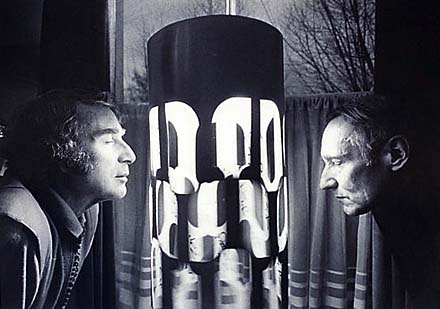If you passed London’s Old Street in the summer of 2018, you will have seen a usually bare piece of land near the roundabout adorned with a giant sculpture of a wave, constructed entirely out of plastic waste. The installation was composed of familiar detritus: empty milk containers, grocery bags and outdoor furniture. But unlike those plastics floating in the world’s oceans or entering household recycling bins every day, the bags and bottles that made up the plastic wave had been carefully selected and assembled to replicate the shape and hues of an oceanic phenomenon. The Wave of Waste was the work of the beer company Corona. Surrounding the sculpture were three large billboards. One depicted a surfer; the others advertised the Mexican beer brand and their commitment to keeping the picturesque beaches frequented by their ideal consumers free from plastic. On closer inspection, the surfer was revealed to be the Australian actor Chris Hemsworth, a plastic wave looming over him.
The actor, formerly of Home and Away fame and now best known for his role in Marvel’s Avengers franchise, is one of six ambassadors for Corona’s partnership with the environmental non-profit Parley for the Oceans. In promotional photographs and videos, celebrities appear alongside local volunteers, picking up plastic waste from one of the 100 island beaches selected as the symbolic examples of Parley and Corona’s environmentalist efforts. The installation at Old Street roundabout was itself constructed out of waste collected from a beach in Sussex; Londoners also had the option to participate in the broader Parley strategy by dropping off their own plastic waste, in order to become part of the sculpture. In Parley’s vision, everyone has a small yet important part to play in the fight against plastics pollution. Movie stars, commuters and island residents become equal participants in a quest to rebuild untouched natural idylls around the world, as though the act of picking up a single plastic bag can reverse decades of wilful destruction.
Narratives like these, which tell stories of individual action, shared responsibility and small-scale intervention, permeate contemporary environmentalist practice. From reusable coffee cups to cycle-to-work schemes, the narratives surrounding contemporary sustainability reduce the seemingly impossible task of halting and reversing environmental degradation to a series of small, incremental changes. Some emphasise the role that consumers can play in advancing environmentalist causes. Others place corporations at their centre, promoting the business opportunities offered by innovation and eco-friendly production. Sometimes, multiple narratives of sustainability come together in a pastiche of misdirected micro-interventions. Parley for the Oceans is one such example.
The charity promotes a three-pillar approach to ridding the world’s oceans of plastic waste: Avoid, Intercept, Redesign (AIR). Clean-up operations, which intercept plastic waste by collecting it on the beach before it can be dragged into the ocean, represent only the second of these tenets. The first – Avoid – also translates into a fairly straightforward refusal to interact with single-use plastics on a day-to-day basis. Redesign, however, refers to an ambitious effort on the charity’s part to develop alternatives to single-use plastics. Parley’s answer is their patented, upcycled Ocean Plastic™, a product that can be used to make reusable bottles, sunglasses and textiles. For the partnership with Corona, Ocean Plastic™ was used to produce a Hawaiian shirt. An ongoing collaboration between Parley and sportswear brand Adidas includes a pair of luxury sneakers made from an estimated eleven plastic bottles. By purchasing products made from upcycled waste, it’s implied, brand loyalists can consume their way to sustainability.
A photograph depicting Ocean Plastic’s™ 55 evolutionary stages appears in various forms across Parley’s website. Though its different iterations compress or extend the upcycling process, the overarching narrative of the image remains consistent. It tells a story of waste turned into resource, of garbage turned prized possession. Against a minimalist white background, the transformation of waste into sustainable consumer products begins with a bottle amongst a bed of broken plastic. To its right lies a handful of blue plastic shards. Those shards become small pellets, which are then turned into a roll of thread. At the end of the frame sits a bottle encased in a fabric holder of yet another shade of blue. Like the roundabout’s plastic wave, sustainability here comes in comforting, clean hues. No shard is spilling over, no pellet out of place. Like the closed loop of the recycling symbol – those green arrows in a triangular shape that point only to other arrows – Ocean Plastic™ promises the complete elimination of waste through its reintegration into cycles of production and consumption. Ocean Plastic’s™ single-image origin myth insists that sustainability can be tidy and beautiful; a matter of imagining new ways of consuming and producing, rather than addressing the practice of consumption itself.
This visual representation of recycling contains a latent political conservatism. Parley’s condensed representation of upcycling confines affective responses to environmental destruction – such as shock, anger, and fear – within a single photographic frame. What falls out of the frame, namely the actual modes of production that turn plastic bottles into upcycled textiles, also falls outside of the narrative of sustainability being propagated here. In its simplicity, the image perpetuates yet another pervasive narrative of renewal, one of a recycling technology so sophisticated that it need not be represented. Recycling, the image seems to say, is not an industry but a creative project. In this particular account of sustainability, environmental crisis requires acts of radical imagination that are of a technological, not political, nature. Within that same narrative, plastics pollution in the world’s oceans becomes a challenge rather than an indictment, to be confronted and ultimately triumphed over. Even the aesthetic qualities of Ocean Plastic’s™ evolutionary stages suggest that Parley’s start-up mentality is motivated more by continuity than disruption. Through the choice of that uniformly blue colour palette, plastic is made to look like the oceans it is actively contaminating. In its recycled form, plastic and its conditions of production become a natural part of the world, accepted as necessary but no longer evil.
*
From corporate partnerships to celebrity documentaries, the problem of plastics pollution has, in recent decades, become an environmentalist cause célèbre. Whether due to the popularity of environmental documentaries, the global panic around microbeads or the discovery of the Great Pacific Garbage Patch in the late 1980s, at some point in the last fifty years the dangers of single-use plastics infiltrated the public consciousness, directing both media attention and corporate funding towards efforts to solve the plastics crisis. As is the case with Parley for the Oceans, the idea of recycling often features either as the solution to plastic waste or as a central component of a larger zero-waste strategy. The Ocean Cleanup Project, an environmental start-up founded in 2013, has raised over $20 million to construct a device that would collect the plastic waste on the ocean’s surface. Its boy-genius founder Boyan Slat, who was recently profiled in the New Yorker, claims that any plastics collected in its oceanic missions will be ‘processed on land and recycled’. Details are, once again, scant. Where or how these collected materials are recycled is unclear, especially as the device (Wilson) has collected little actual plastic on its missions to date.
This is not to say that no media efforts have been made to represent the recycling process itself. In the UK, the treatment of recycling in the BBC’s three-part documentary series Hugh’s War on Waste is perhaps most telling for the way it avoids the subject of human labour. The series follows celebrity chef turned zero-waste crusader Hugh Fearnley Whittingstall as he investigates the societal ill of food dumping. Airing throughout 2015 and 2016, Hugh’s War on Waste follows its host as he embarks on a midnight dumpster-diving mission, slides down a mountain of discarded clothes at a shopping centre, and teaches the bemused residents of Prestwich in Greater Manchester how to reduce their food waste. The show’s tone is one of deliberate condescension, which is nowhere more pronounced than in a sequence that takes place at a local Materials Recovery Facility (MRF). Hugh is sure that a tour of a plant in which recyclables are sorted and packaged for transportation should convince even the most sceptical of Prestwich residents that there are real benefits to becoming a good recycler.
Arriving at the plant, we watch as Hugh points out the various technological feats the MRF achieves. Look, he tells his tour participants, this machine uses lasers to determine which plastics belong together. Sometimes he gestures towards one or two men, at the far-left of the screen, who sort waste in the background as Hugh proselytises about the magic of turning plastic waste into plastic products. The positioning of the workers at the peripheries of the frame, and Hugh’s lack of interest in their labour, signal to the viewer that the plant’s employees should not be considered essential components of the MRF. Instead, host and camera repeatedly direct attention to the machine itself. Who, the documentary suggests, could be interested in the work of human hands in the presence of laser technology?
As the tour group leaves the MRF, every Prestwich resident expresses doubts about the facility’s effectiveness. They ask some important questions. What happens to the plastic once it has been sorted and packaged into large bales? Aren’t these still the same materials that were discarded in the first place? How are these bottles transformed into new objects? Hugh appears momentarily perturbed. Then, he leads them to a container, located in another part of the site. This variation on the ‘pop-up’ mall is stocked with items made from recycled waste. There are children’s toys, a rain jacket, a fixed-gear bicycle. An intern is probably responsible for the makeshift paper print-outs listing the number of recyclable materials used in the production of each item. This display of sustainable consumption is what it takes for Hugh’s participants to turn a corner. Their doubts dispelled once and for all, the sceptics of Prestwich become recycling advocates. They promise to do better. Recycling is, once again, transformative. Just as it creates value out of seemingly useless materials, so too does it spread the gospel of environmentalism to cities and towns across the United Kingdom. On this occasion, there is some practicality to the proceedings.
Recycling is not entirely mystified. But what connects Parley for the Oceans and Hugh’s War on Waste is their shared unwillingness to directly confront the role of workers in the recycling industry. As though acknowledging the centrality of labour risks destabilising these narratives of creative, techno – logical innovation, the human work of recycling, in both cases, is either ignored or casually dismissed. In each case, eliding the question of labour is a way of keeping sustainability and recycling both aesthetically and politically pure. Without a discussion of how the recycling industry relies on the same global divisions of labour as capitalism writ-large, the transformation of waste into upcycled luxury products can be conceived as an act of radical reimagination. This narrative around recycling functions on the erasure of human labour: an erasure necessary to sustain our fictions of sustainability.
(…)
share
ABOUT THE CONTRIBUTOR
CHRISTINE OKOTH is a Research Fellow at the University of Warwick and is writing a book about ecology, extraction, and contemporary literature.




